Welcome to our free classical music site

Do you write about classical music? Are you a blogger? Want to team up with Classical Connect? Send us a message, let's talk!

Do you write about classical music? Are you a blogger? Want to team up with Classical Connect? Send us a message, let's talk!
December 3, 2018. Mieczysław Weinberg. The Polish-Jewish-Soviet composer Mieczysław Weinberg is known by many names: his first name is sometimes spelled Moisey, his last name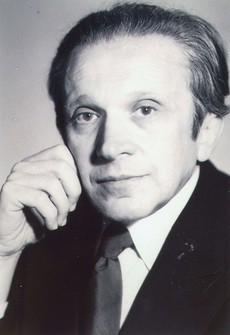 Vainberg, Vajnberg or Vaynberg. The problem is that, no matter how his name is spelled, the public doesn’t know his music. It’s a pity, as he deserves better. He was born Mojsze Wajnberg on December 9th of 1919 into a Jewish family in Warsaw. His father wrote music for Yiddish theaters. His mother was an actress in the same theaters. Mojsze (or Mieczysław in Polish) studied piano at the Warsaw Conservatory, graduating in 1939. On September of that year the Nazis entered Poland starting WWII and Weinberg fled to the Soviet Union. It was often the case at the time that Jewish families sent their older sons away first, hoping to join them later. Unfortunately, his parents and younger sister never made it out of Poland and eventually perished in a concentration camp. Weinberg settled in Minsk and went to the local Conservatory, where he studied composition. In 1941 Germany attacked the Soviet Union; the Minsk Conservatory was evacuated to Central Asia and Weinberg found himself in Tashkent. There, he met and eventually married Natalia Vovsi, daughter of the famous Yiddish actor and director Solomon Mikhoels (Mikhoels was his stage name, he was born Shloyme Vovsi). In 1943 Weinberg sent the score of his First Symphony to Dmitry Shostakovich. Shostakovich was impressed and arranged for Weinberg to be invited to Moscow; they soon became good friends. In January of 1948 his father-in-law, Solomon Mikhoels, one of the most prominent Jews of the Soviet Union, the chairman of the Jewish Anti-Fascist Committee who traveled the world encouraging support for the Soviet Union, was assassinated on Stalin’s orders. The murder was covered up as a road accident. At the time of Stalin’s campaign against “cosmopolitanism” (read anti-Jewish, antisemitic campaign) that followed, all prominent Jews were at risk. Weinberg was no exception: in February of 1953 he was arrested as a “Jewish bourgeois nationalist” and sent to the Gulag. Shostakovich, who wasn’t known for his civic courage, sent a letter to Lavrentiy Beria pleading his friend’s innocence (it didn’t help). Weinberg and many other Jews were saved by Stalin’s sudden death in March of 1953. Weinberg was allowed to return to Moscow. His family found a place not far from Shostakovich’s apartment; they visited each other often. Weinberg continued composing; his work, championed by Shostakovich, was also endorsed by several prominent performers and conductors, among them Emil Gilels, Leonid Kogan, Mstislav Rostropovich, Rudolph Barshai and Kirill Kondrashin. Weinberg died in Moscow on February 26th of 1996; shortly before death he converted to Orthodox Christianity.
Vainberg, Vajnberg or Vaynberg. The problem is that, no matter how his name is spelled, the public doesn’t know his music. It’s a pity, as he deserves better. He was born Mojsze Wajnberg on December 9th of 1919 into a Jewish family in Warsaw. His father wrote music for Yiddish theaters. His mother was an actress in the same theaters. Mojsze (or Mieczysław in Polish) studied piano at the Warsaw Conservatory, graduating in 1939. On September of that year the Nazis entered Poland starting WWII and Weinberg fled to the Soviet Union. It was often the case at the time that Jewish families sent their older sons away first, hoping to join them later. Unfortunately, his parents and younger sister never made it out of Poland and eventually perished in a concentration camp. Weinberg settled in Minsk and went to the local Conservatory, where he studied composition. In 1941 Germany attacked the Soviet Union; the Minsk Conservatory was evacuated to Central Asia and Weinberg found himself in Tashkent. There, he met and eventually married Natalia Vovsi, daughter of the famous Yiddish actor and director Solomon Mikhoels (Mikhoels was his stage name, he was born Shloyme Vovsi). In 1943 Weinberg sent the score of his First Symphony to Dmitry Shostakovich. Shostakovich was impressed and arranged for Weinberg to be invited to Moscow; they soon became good friends. In January of 1948 his father-in-law, Solomon Mikhoels, one of the most prominent Jews of the Soviet Union, the chairman of the Jewish Anti-Fascist Committee who traveled the world encouraging support for the Soviet Union, was assassinated on Stalin’s orders. The murder was covered up as a road accident. At the time of Stalin’s campaign against “cosmopolitanism” (read anti-Jewish, antisemitic campaign) that followed, all prominent Jews were at risk. Weinberg was no exception: in February of 1953 he was arrested as a “Jewish bourgeois nationalist” and sent to the Gulag. Shostakovich, who wasn’t known for his civic courage, sent a letter to Lavrentiy Beria pleading his friend’s innocence (it didn’t help). Weinberg and many other Jews were saved by Stalin’s sudden death in March of 1953. Weinberg was allowed to return to Moscow. His family found a place not far from Shostakovich’s apartment; they visited each other often. Weinberg continued composing; his work, championed by Shostakovich, was also endorsed by several prominent performers and conductors, among them Emil Gilels, Leonid Kogan, Mstislav Rostropovich, Rudolph Barshai and Kirill Kondrashin. Weinberg died in Moscow on February 26th of 1996; shortly before death he converted to Orthodox Christianity.
Weinberg is sometimes dismissed as the “smaller Shostakovich.” It’s true that he borrowed some idioms from his great compatriot and in some pieces quoted him directly, but Weinberg was a talented original composer, a wonderful melodist also capable of sophisticated orchestration. He wrote seven operas; the best known, The Passenger, has been staged at the English National Opera, the Lyric Opera of Chicago and many other stages. He also wrote 22 symphonies and many chamber works. Here’s the second movement, Lento, from Weinberg’s Symphony no. 1, composed in 1942 in Tashkent, the one that so impressed Shostakovich. Gothenburg Symphony Orchestra is conducted by Thord Svedlund.Permalink
November 26, 2018. Lully, Donizetti, Callas. Jean-Baptiste Lully was born this week, on November 28th of 1632. He’s the first of the great French Baroque composers – Couperin and Rameau followed, each a generation younger. When Lully was accepted at the court of Louis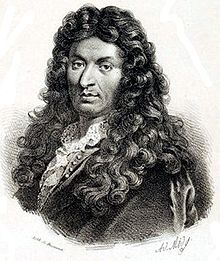 XIV, first as a dancer, then as composer, French music was in a temporary decline. The Italians were way ahead, developing the new Baroque style: Monteverdi, the “father” of the opera, was one of the very first to cross the line between Renaissance and Baroque; Girolamo Frescobaldi adapted the new style to his music for the clavier; Giacomo Carissimi, Tarquinio Merula and Salamone Rossi were among the early adopters. Francesco Cavalli and Antonio Cesti followed Monteverdi in the development of opera. There were many more – Italy was bursting with musical talent. The French just couldn’t compare – that’s till Lully, an Italian who took French citizenship once the King gave him the most important music position in the realm, that of the surintendant de la musique de la chambre du roi, the superintendent – the manager and organizer – of music in the King’s chambers. And at the court, Lully was really in charge of everything music-related. He had two composers working for him, supervised several ensembles, including the famous Twenty-Four Violins of the King, and other musicians. He also composed. In 1664 he met Molière, with whom he created several comédies-ballets. Most of them were premiered at the court and then played in Paris theaters. Lully even became known in Italy: the Grand Duke of Tuscany asked him to write several dances in the “fashionable style.” All this work brought Lully a lot of money, and in 1670 be built himself a splendid house on the corner of rue Sainte-Anne and rue des Petits Champs (the house was so expensive that he still had to borrow 11,000 livres from Molière). The building still exists. Here’s a short Prelude to Psyché, a play by Molière. William Christie conducts Les Arts Florissants.
XIV, first as a dancer, then as composer, French music was in a temporary decline. The Italians were way ahead, developing the new Baroque style: Monteverdi, the “father” of the opera, was one of the very first to cross the line between Renaissance and Baroque; Girolamo Frescobaldi adapted the new style to his music for the clavier; Giacomo Carissimi, Tarquinio Merula and Salamone Rossi were among the early adopters. Francesco Cavalli and Antonio Cesti followed Monteverdi in the development of opera. There were many more – Italy was bursting with musical talent. The French just couldn’t compare – that’s till Lully, an Italian who took French citizenship once the King gave him the most important music position in the realm, that of the surintendant de la musique de la chambre du roi, the superintendent – the manager and organizer – of music in the King’s chambers. And at the court, Lully was really in charge of everything music-related. He had two composers working for him, supervised several ensembles, including the famous Twenty-Four Violins of the King, and other musicians. He also composed. In 1664 he met Molière, with whom he created several comédies-ballets. Most of them were premiered at the court and then played in Paris theaters. Lully even became known in Italy: the Grand Duke of Tuscany asked him to write several dances in the “fashionable style.” All this work brought Lully a lot of money, and in 1670 be built himself a splendid house on the corner of rue Sainte-Anne and rue des Petits Champs (the house was so expensive that he still had to borrow 11,000 livres from Molière). The building still exists. Here’s a short Prelude to Psyché, a play by Molière. William Christie conducts Les Arts Florissants.
Gaetano Donizetti was born on November 29th of 1797 in Bergamo. He studied in a local school established by a German opera composer Simon Mayr, who moved to Bergamo and was appointed the maestro di cappella at the Cathedral of Bergamo. Gaetano was one of Mayr’s favorite pupils, and Mayr even secured a scholarship for him to study in Bologna. In 1821 Donizetti, a fledgling composer, moved to Rome. There he wrote hist first successful opera, Zoraida. A year later he moved to Naples and stayed there for 16 years. It was during that period that he wrote most of his masterpieces. The first was Anna Bolena, written in 1830. It premiered in Milan, in Teatro Carcano; the success was overwhelming. Giuditta Pasta sung the title role. Pasta, a mezzo who sung soprano roles, one of the greatest singers of her time (Bellini wrote the role of Norma with her in mind). Nowadays, musicologists compare her to Maria Callas. It just so happens that Maria Callas’s birthday is also this week! She was born on December 2nd of 1923 in New York to Greek parents. Here’s an outstanding performance by Callas in the Mad Scene from Anna Bolena. In the 20th century Donizetti’s masterpiece was almost forgotten, partly because the main role is so demanding; Pasta brought Anna Bolena to life, Callas’s performance at La Scala in 1957 helped to revive it. In this studio recording, made one year later in London, Nicola Rescigno is conducting the Philharmonia Orchestra. We can only guess if Giuditta Pasta was as good.Permalink
November 19, 2018. Three 20th century composers. Benjamin Britten was born on November 22nd of 1913 in Lowestoft, the easternmost town in the UK. The greatest British composer of the 20th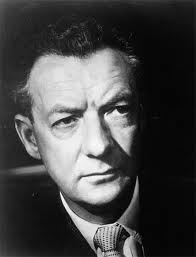 century, he was also the leading opera composer of his time, having written such classics as Peter Grimes, Billy Budd, and The Turn of the Screw. Britten received his first musical lessons from his mother; he then continued taking lessons at Lowestoft and later – at the Royal College of Music in London. In 1934, while Britten was still studying at the Royal College, he had his first composition, the Sinfonietta, Op. 1, performed in public (by then he had written many pieces he would later dismiss as juvenilia). After graduating, he worked for the BBC movie unit and wrote music for theater and radio. London was (and is) one of Europe’s music centers; Britten went to many concerts and fell in love with the music of Mahler (Das Lied von der Erde in particular); Berg (especially Wozzeck) and Stravinsky also left a big impression (he even wanted to study with Berg but that never worked out). In 1937 Britten met the young tenor, Peter Pears, who became a personal and professional partner for the rest of his life (Pears outlived Britten by 10 years). In April of 1939 Britten and Pierce sailed to America; both were pacifists and felt uncomfortable in Europe, also several of their friends, like W. H. Auden and Christopher Isherwood, had moved to the US. As WWII began, they decided to return to Britain, but the British Embassy persuaded them to stay on as “cultural ambassadors.” Still, in 1942 they returned, and Britten started working on the opera Peter Grimes, which he completed in 1944. It premiered in 1945 at Sadler's Wells Opera, now English National Opera, London’s second (after the Covent Garden) opera house. Here are Four Sea Interludes from "Peter Grimes", with Leonard Bernstein conducting the Boston Symphony Orchestra. Peter Grimes was both a critical and popular success, and it established Britten as a foremost British composer. This is Bernstein’s last recording, made live in Tangelwood on August 19th of 1990. Bernstein died in New York a month and a half later. As for Britten, we’ll have to return to the second half of his life – his operas, songs and symphonic works – at another time. For now, here’s an aria from Peter Grimes,Embroidery in childhood. Ellen is wonderfully sung by the soprano Renée Fleming, Balstrode is the baritone Jonathan Summers. London Symphony Orchestra is conducted by Sir Georg Solti.
century, he was also the leading opera composer of his time, having written such classics as Peter Grimes, Billy Budd, and The Turn of the Screw. Britten received his first musical lessons from his mother; he then continued taking lessons at Lowestoft and later – at the Royal College of Music in London. In 1934, while Britten was still studying at the Royal College, he had his first composition, the Sinfonietta, Op. 1, performed in public (by then he had written many pieces he would later dismiss as juvenilia). After graduating, he worked for the BBC movie unit and wrote music for theater and radio. London was (and is) one of Europe’s music centers; Britten went to many concerts and fell in love with the music of Mahler (Das Lied von der Erde in particular); Berg (especially Wozzeck) and Stravinsky also left a big impression (he even wanted to study with Berg but that never worked out). In 1937 Britten met the young tenor, Peter Pears, who became a personal and professional partner for the rest of his life (Pears outlived Britten by 10 years). In April of 1939 Britten and Pierce sailed to America; both were pacifists and felt uncomfortable in Europe, also several of their friends, like W. H. Auden and Christopher Isherwood, had moved to the US. As WWII began, they decided to return to Britain, but the British Embassy persuaded them to stay on as “cultural ambassadors.” Still, in 1942 they returned, and Britten started working on the opera Peter Grimes, which he completed in 1944. It premiered in 1945 at Sadler's Wells Opera, now English National Opera, London’s second (after the Covent Garden) opera house. Here are Four Sea Interludes from "Peter Grimes", with Leonard Bernstein conducting the Boston Symphony Orchestra. Peter Grimes was both a critical and popular success, and it established Britten as a foremost British composer. This is Bernstein’s last recording, made live in Tangelwood on August 19th of 1990. Bernstein died in New York a month and a half later. As for Britten, we’ll have to return to the second half of his life – his operas, songs and symphonic works – at another time. For now, here’s an aria from Peter Grimes,Embroidery in childhood. Ellen is wonderfully sung by the soprano Renée Fleming, Balstrode is the baritone Jonathan Summers. London Symphony Orchestra is conducted by Sir Georg Solti.
Polish composer Krzysztof Penderecki was born 20 years after Britten, on November 23rd of 1933, but his music belongs to a very different era. It’s much more “avantgarde,” at least the music he wrote in the first half of his creative life. Penderecki has said that as a child he was very religious: “My family was very open. My grandfather was German and a Protestant. My father, a lawyer, was Greek-Catholic and played the violin. My mother was very religious and went to church twice a day. My grandmother was Armenian. So I was raised with three different faiths - that's why I am so open.” This probably explains Penderecki’s interest in religious themes: in 1958 he wrote Psalms of David for mixed choir, string instruments and percussions; in 1966 – The St Luke Passion; then a choral work Canticum Canticorum Salomonis in 1973 and a year later, the orchestral piece, The Dream of Jacob. Here’s the first movement of Part I of St. Luke Passion, "O Crux ave." Antoni Wit conducts the Warsaw National Philharmonic and Choir, Warsaw Boys Choir and the soloists.
Another very interesting 20th century composer, Alfred Schnittke was born on November 24th of 1934. We’ll have to write about him another time.Permalink
November 12, 2018. Borodin. Russian composer Alexander Borodin was born on this day in 1833. He was the illegitimate son of a Georgian Prince Luka Gedianov and his mistress, Avdotya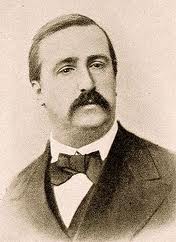 Antonova. Alexander was registered as a son of one of Gedianov’s serfs, Porfiry Borodin, a common practice in those days. Borodin was thus officially born a serf, so the prince had to formally free him, which he did when Alexander was seven. The prince also arranged Avdotya’s marriage to a retired army physician who died two years later. Alexander was educated by private tutors at home; when he was 13, his mother took on a boarder, Mikhail Shchiglev, and the boys became good friends. Both liked music and took piano lessons. Around that time Alexander started composing, and even had three pieces published to good reviews. He never thought of becoming a professional musician – he was interested in chemistry and at the age of 17 entered the St Petersburg Medical-Surgical Academy. Soon after graduating, he was sent to Heidelberg for advanced studies (the famous Russian chemist Dmitry Mendeleyev lived there at the time). In Heidelberg he found a thriving musical community and played regularly in cello duets and quartets. He continued composing, mostly for himself. Borodin’s scientific research brought him to many European cities; these travels broadened his musical horizons as well: in Mannheim, for example, he became acquainted with the music of Wagner, for the first time listening to Der fliegende Holländer, Tannhäuser and Lohengrin. While in Heidelberg, he met a 29-year-old Russian pianist, Yekaterina Protopopova. They fell in love and Borodin proposed. Protopopova was ill with tuberculosis, and doctors suggested that she go to Pisa, Italy. Borodin went with her and arranged for some scientific work in the city in order to stay with his fiancée. A year later, in 1862, they returned to St.-Petersburg where Borodin received a position at the Medical-Surgical Academy and married. They stayed together for the rest of his life: Borodin was first to die, at the age of 53.
Antonova. Alexander was registered as a son of one of Gedianov’s serfs, Porfiry Borodin, a common practice in those days. Borodin was thus officially born a serf, so the prince had to formally free him, which he did when Alexander was seven. The prince also arranged Avdotya’s marriage to a retired army physician who died two years later. Alexander was educated by private tutors at home; when he was 13, his mother took on a boarder, Mikhail Shchiglev, and the boys became good friends. Both liked music and took piano lessons. Around that time Alexander started composing, and even had three pieces published to good reviews. He never thought of becoming a professional musician – he was interested in chemistry and at the age of 17 entered the St Petersburg Medical-Surgical Academy. Soon after graduating, he was sent to Heidelberg for advanced studies (the famous Russian chemist Dmitry Mendeleyev lived there at the time). In Heidelberg he found a thriving musical community and played regularly in cello duets and quartets. He continued composing, mostly for himself. Borodin’s scientific research brought him to many European cities; these travels broadened his musical horizons as well: in Mannheim, for example, he became acquainted with the music of Wagner, for the first time listening to Der fliegende Holländer, Tannhäuser and Lohengrin. While in Heidelberg, he met a 29-year-old Russian pianist, Yekaterina Protopopova. They fell in love and Borodin proposed. Protopopova was ill with tuberculosis, and doctors suggested that she go to Pisa, Italy. Borodin went with her and arranged for some scientific work in the city in order to stay with his fiancée. A year later, in 1862, they returned to St.-Petersburg where Borodin received a position at the Medical-Surgical Academy and married. They stayed together for the rest of his life: Borodin was first to die, at the age of 53.
While working, very successfully, as a research chemist and publishing scientific papers, Borodin met Mily Balakirev and through him César Cui, Modest Mussorgsky and the young Nikolai Rimsky-Korsakov. Balakirev encouraged Borodin to compose, which he did, starting on a symphony, eventually Symphony no. 1. It took Borodin six year to complete, his main preoccupation still being chemistry. Balakirev premiered the symphony in 1869; while the public liked it, many critics did not. That year Borodin started working on his Second symphony which, after major modifications, was completed ten years later. During that time, he started, and then abandoned, working on several pieces, including the opera The Tsar’s Bride. In 1869 he began composing another opera, called Prince Igor, based on the anonymous Russian epic The Tale of Igor’s Campaign, an account of a failed raid of Prince Igor Svyatoslavich of Kievan Rus against the Polovtsians. After working on the opera for about three years, during which time he composed several sections, including the famous Polovtsian Dances, he dropped the project in 1872 to work on the Second symphony but returned to the opera two years later. He would continue working on it on and off till his death in 1887, leaving it incomplete. Later, Glazunov and Rimsky-Korsakov completed the opera: some parts were composed anew by Rimsky, some parts were reconstructed by Glazunov from memory, based on Borodin’s piano renditions which he performed for his friends.
Here’s Borodin’s Petite Suite. It was originally written for the piano, but Glazunov orchestrated it after Borodin’s death, incorporating a Scherzo, a separate piece by Borodin, as a final movement. Neeme Järvi is conducting the Gothenburg Symphony Orchestra.Permalink
November 5, 2018. Couperin and much more. François Couperin, Couperin le Grand, one of the greatest French composers of the end of the 17th – early 18th century, was born in Paris on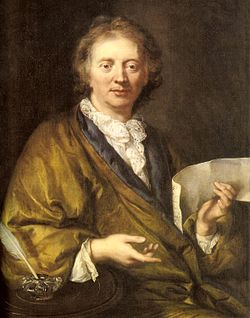 November 10th of 1668. The most important French composer between Lully and Rameau, he was featured on these pages many times, for example here. We know him mostly as a composer for the harpsichord and the organ, but Couperin wasn’t confined to keyboard instruments. In 1714 he wrote the three Leçons de ténèbres (literally, Lessons of Darkness), vocal settings for the Tenebrae service, held during the three days preceding Easter. During the traditional Catholic service candles are extinguished, and the service ends in total darkness. The text is from the biblical Lamentations of Jeremiah. Many composers set the Ténèbres to music, especially during the Renaissance era, for example, Palestrina, Thomas Tallis and, famously, Orlando di Lasso. Couperin’s setting is among the best. Here is the third Leçon for two sopranos; it’s performed by Montserrat Figueras and Maria Cristina Kiehr, Jordi Savall conducts Le Concert Des Nation.
November 10th of 1668. The most important French composer between Lully and Rameau, he was featured on these pages many times, for example here. We know him mostly as a composer for the harpsichord and the organ, but Couperin wasn’t confined to keyboard instruments. In 1714 he wrote the three Leçons de ténèbres (literally, Lessons of Darkness), vocal settings for the Tenebrae service, held during the three days preceding Easter. During the traditional Catholic service candles are extinguished, and the service ends in total darkness. The text is from the biblical Lamentations of Jeremiah. Many composers set the Ténèbres to music, especially during the Renaissance era, for example, Palestrina, Thomas Tallis and, famously, Orlando di Lasso. Couperin’s setting is among the best. Here is the third Leçon for two sopranos; it’s performed by Montserrat Figueras and Maria Cristina Kiehr, Jordi Savall conducts Le Concert Des Nation.
Walter Gieseking, a French-German pianist, was also born this week, on November 5th of 1895. Gieseking was born in Lyon; his father was a well-known German doctor. He began playing the piano at the age of four and didn’t receive any formal training till he entered the Hamburg Conservatory at the age of 16. When he was 20, still in Hamburg, he performed a cycle of almost all Beethoven sonatas; it was extremely well received. He then performed several very successful concerts in Berlin; his playing of the music of Debussy and Ravel was especially noted. While some of his compatriots emigrated, Gieseking stayed in Germany during the Nazi period; Vladimir Horowitz and Arthur Rubinstein both accused him of being a Nazi collaborator. After the war, he was practically banned from performing in the US but continued playing in the more forgiving Europe. He eventually was cleared of cultural collaboration and returned to the US. He was known is an outstanding performer of the music of Debussy and Ravel. Here’s the 1953 recording Gieseking made in London of Debussy’s Image, Book I. Gieseking died in London on October 26th of 1956. At the time he was in London, recording the full cycle of Beethoven’s sonatas. He was in the process of recording Sonata no. 15, Op. 28 (“Pastoral”) when he suddenly fell ill. By then, the first three movements had been already recorded; it was never finished. This incomplete recording was issued by HMV.
Ivan Moravec, a wonderful Czech pianist, is not as well known as he probably should be. He was born on November 9th of 1930 and died three years ago, on July 27th of 2015. Moravec studied in Prague and later with Arturo Benedetti Michelangeli in Arezzo. Moravec’s playing wasn’t flashy but probing, highly musical and faithful to the composer’s ideas. He was rightly considered an exquisite performer of Chopin’s music. He was also wonderful in Ravel and Debussy – someday we’ll play his performances parallel to Gieseking’s. Here’s Chopin’s Nocturne, No. 1 In B-flat minor recorded in 1966.Permalink
October 29, 2018. John Dunstaple. Vincenzo Bellini was born this week, on November 3rd of 1801 (here’s the final scene from La Pirata, with Maria Callas and the Philharmonia orchestra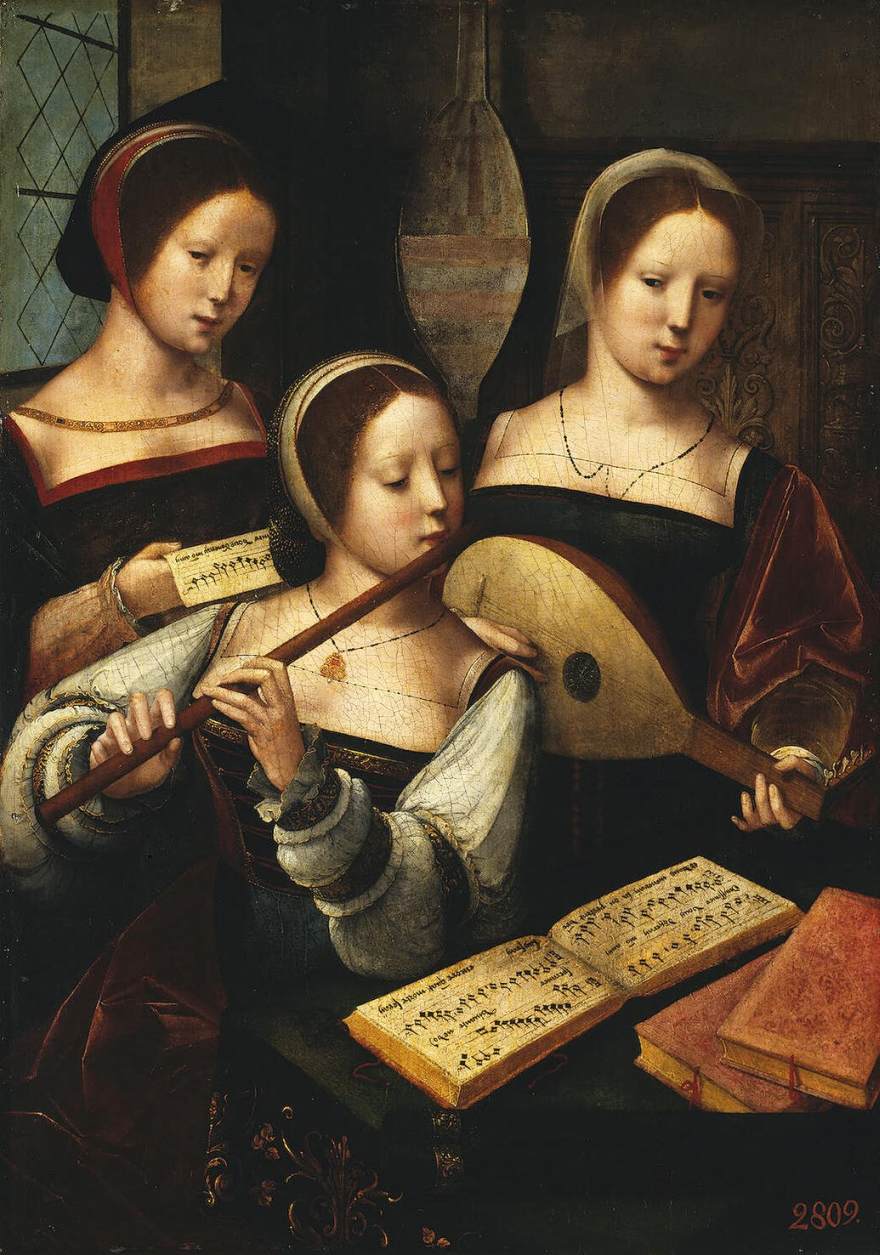 conducted by Nicola Rescigno). Also, two wonderful conductors: Eugen Jochum, on November 1st of 1902, and Giuseppe Sinopoli, on November 2nd of 1946. Jochum, one of the most interesting interpreters of the music of Bruckner, was a long-time conductor of the Hamburg Philharmonic, which he directed during the Nazi era (Jochum never joined the Nazi party or any other Nazi organizations). After the war he became the founding music director of the Bavarian Radio Symphony Orchestra. He also had long-term relationships with the Concertgebouw Orchestra and other major orchestras. Here’s the first movement of Bruckner’s Symphony no. 6. Jochum conducts “his” Bavarian Radio Symphony Orchestra.
conducted by Nicola Rescigno). Also, two wonderful conductors: Eugen Jochum, on November 1st of 1902, and Giuseppe Sinopoli, on November 2nd of 1946. Jochum, one of the most interesting interpreters of the music of Bruckner, was a long-time conductor of the Hamburg Philharmonic, which he directed during the Nazi era (Jochum never joined the Nazi party or any other Nazi organizations). After the war he became the founding music director of the Bavarian Radio Symphony Orchestra. He also had long-term relationships with the Concertgebouw Orchestra and other major orchestras. Here’s the first movement of Bruckner’s Symphony no. 6. Jochum conducts “his” Bavarian Radio Symphony Orchestra.
The Italian conductor Giuseppe Sinopoli was only 54 when he died of a heart attack while conducting Aida at the Deutsche Oper, Berlin. He was best known as an opera conductor, having worked at the Bayreuth, the Metropolitan opera and most opera houses if Europe. He led the Staatskapelle Dresden for almost 10 years. Like Johum, Sinopoli made several interesting recordings of Bruckner; he was also an insightful Mahlerian. Here Sinopoli is conducting the Vienna Philharmonic in Robert Schumann’s Manfred Overture, Op. 115.
We find John Dunstaple’s music irresistible. Duntsaple was born around 1390, about the same time as the famous Burgundian, Guillaume Dufay. In England, Dunstaple was followed by Robert Morton (born around 1430), Walter Lambe (1453), John Taverner (1490), Thomas Tallis (1505), William Byrd (1540), John Dowland, John Bull (both born in 1563), and Orlando Gibbons (1583). These are just the more famous names; the tradition of the Early English Renaissance is quite remarkable. Dunstaple served in the court of John of Lancaster, a son of king Henry IV and a brother of Henry V. John led the British forces in many battles of the Hundred Year War with France (he was the one to capture Joan of Arc). It’s likely that for several years Dunstaple stayed in Normandy, where John was the Governor. From there his music spread over the continent. Considering that a major war was raging in France, that is quite remarkable. Dunstaple’s influence was very significant, especially affecting musicians of the highly developed Burgundian school; the reason was both musical and political, as Burgundy was allied with England in its war against France. The poet Martin Le Franc, a contemporary of Dunstaple, came up with the term La Contenance Angloise, which could be loosely translated as “English manner” and said that it affected the two greatest composers of Burgundy, Guillaume Dufay and Gilles Binchois. Dunstaple probably returned to England after John’s death in 1435; he served in the court of Humphrey of Lancaster, John’s brother. In addition to writing music Dunstaple studied mathematics, astronomy and astrology. He died in 1453. When, during the reign of Henry VIII England became Protestant, many monasteries – the main keepers of musical tradition – were "dissolved" and their libraries ruined. Most of the English manuscripts of Dunstaple’s music were lost. Fortunately, many copies remained in Italy and Germany – evidence of Dunstaple’s international fame. About 50 compositions are currently attributed to him (these attributions are sometimes challenged). Among these are two masses, a number of sections from different masses, and many motets. Here’s Dunstaple’s Quam pulchra es. It’s performed by the Hilliard Ensemble, Paul Hillier conducting. Permalink